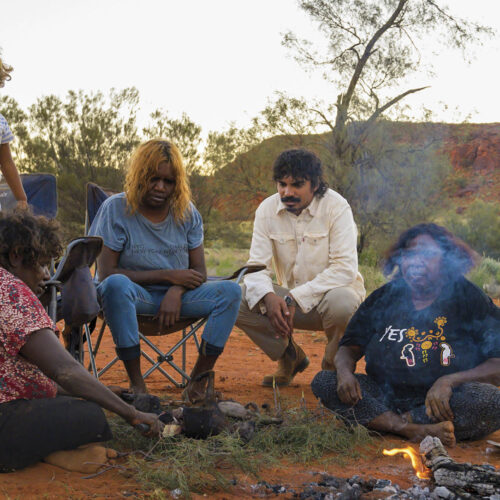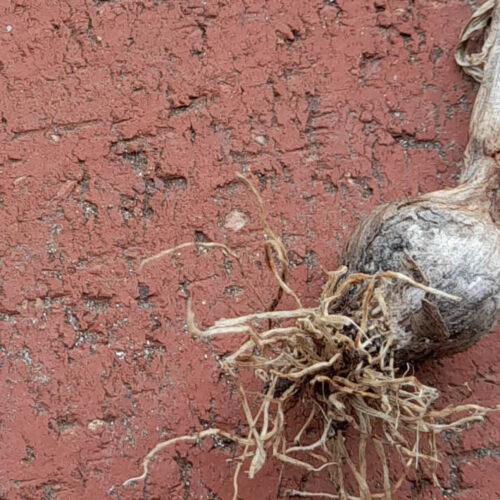The meat debate
2016-03-01T23:28:57+11:00
DAVID HOLMGREN, MARC LLEWELLYN and PAUL WEST contemplate the omnivore's dilemna.
In the May/June 2016 issue of Organic Gardener magazine we featured an article about the environmental, health and ethical issues surrounding meat eating. Here are some further musings on the subject by David Holmgren, Paul West and Marc Llewellyn.
The simple life
Marc Llewellyn
Some years ago I lived for a year on a small Italian island off the coast of Sicily. There I met a peasant farmer called Nino, and over the following months he taught me as much as he could about living sustainably off the land.
Most days we would work together in his fields or garden plots, and return with ingredients for lunch and dinner that were nourished by the rich volcanic soil. We picked artichokes and gathered herbs by the armful. Lettuces and chillies grew beneath his fig trees. There were boxes of potatoes, gallons of oil from his olive groves, and crates of grapes for wine and desserts. Grain from his fields became pasta and bread. We turned tomatoes into sauce, or hung them up to dry from the rafters in his barn.
One thing that I quickly came to realise was that meat was a rarity. He kept a few chickens for eggs, though a few times a year a stringy cockerel or an older hen made it into the pot. Now and again his wife cooked one of the rabbits he kept in a large run. He would barter some of these creatures for fish, or to have his sickle sharpened. Occasionally he would return home from his fields with a wild rabbit he had trapped. It tasted gamier than the ones he farmed.
Nino and his family were fit and healthy. They avoided processed and tinned food, which he considered to be toxic. He had once visited a supermarket out of curiosity. He knew where his meat was coming from.
Speaking to my grandfather
Paul West
I’m unashamedly an omnivore, though my eating habits have changed significantly in recent years. I, like many Australians grew up in a “meat and three veg” household and those meals were always more meat than veg. As I grow older and my understanding of cooking and food production deepens, I’ve found myself naturally gravitating toward a more plant-based diet. I can attribute this evolution to multiple factors. Firstly as a cook, vegetables offer far more scope for variety and creativity in the kitchen.
I’ve found that in my life, eating a more plant-based diet has led to improved health and an increased feeling of wellbeing.
In the last three years I’ve become intimately involved in raising my own meat for the table and as a consequence have discovered how much effort goes into producing a product that industrial agriculture has allowed us to take for granted.
Speaking to my grandfather, he told me that as a child, chicken was a rare treat, something that you had to raise yourself and you only ate a couple of times a year as way of dealing with your surplus backyard stock. Now, according to the most recent data from the ABS the average Australian consumes 43.8kg of poultry meat every year. That would be akin to every Australian having a flock of around 100 birds! Has this increased access to cheap protein improved our quality of life? Has it improved the health of our society? A quick look at the line at your local fast food chain would argue no.
Industrial production of meat has stemmed from an ever increasing demand, and will no doubt continue to grow unless we as consumers start to demand better conditions for farmers, their communities and their livestock. Despite the huge market power of these industrial producers, they are still beholden to market demand, if we can inspire more consumers to care about the way that their meat is raised then companies will have to evolve to meet those demands. This change will only ever come from a grass roots level, both government and business have too great a vested interest in industrial agriculture to change the industry for benevolent and ethical reasons.
On the positive front, well cared for livestock can play a vital role in the fertility cycle of small farms. Livestock help unlock the nutrition in pasture that’s unavailable to us as humans. They can convert pasture into muscle and protein as well as providing manure to enrich our plots to grow nutritious plants that we can digest.
If I had a magic wand
David Holmgren
The production of meat around the world (and in Australia) is one of the most unethical and problematic aspects of current global food systems. The worst of this is feedlot raised beef cattle fed concentrates (potential human food) grown in large scale monocultures using fossil water resources and controlled by global corporations. In Australia these systems are a minor part of meat production. Intensively raised poultry and pigs are equally unethical but slightly less wasteful of resources.
If I could wave a magic wand to change collective human behaviour (while respecting the principles of nature and laws of physics) here is some of what I would do.
- Close down all feedlotting of cattle other than small scale on-farm systems using fodder (not concentrates) to fatten rangeland cattle in poor condition.
- Phase out all large scale intensive raising of poultry and pigs, progressively replaced by one quarter of that production from integration of poultry and pigs into free range rotational management on better quality arable farmland (some of which currently farmed without any livestock)
- Increase production of meat, eggs and dairy from animals raised in suburban and town areas fed human food waste and green waste (eg backyard chooks, rabbits mowing lawns, backyard goats fed tree and shrub fodder cut in the neighourhood, pigs in peri-urban food forests).
- Reduce the numbers of dairy cows to half, restricted to high rainfall pasture country, mainly in Tasmania and Victoria plus small areas in and around major cities and regional towns
- Increase consumption of goat meat and dairy from free range herds managing weeds, brambles and shrub regrowth in peri-urban and rural areas. These herds would take over most of the vegetation management currently done by machines, fire and herbicide
- Replace current exports of cow dairy products from irrigated land with exports of surplus dairy products (mostly hard cheese) from rangeland goats in mid to higher rainfall hill country less suited to dairy cows
- Cut average meat and dairy consumption by half and shift half of the remainder to wild animals from rabbits and carp to wild ducks and cockatoos as well as kangaroos, wild goats, deer and camels.
- Reduce national sheep numbers to reflect lower consumption of wool for clothing over the first decade of economic contraction.
- Cut fat lamb production in high rainfall areas, maintain mutton production as byproduct of wool production
- Allow populations of kangaroos to rise to maintain grassland fire risk and use increased numbers of managed goats to better control unwanted woody vegetation. Return royalties to all rural land owners proportional to their sustenance of the harvested wild animal populations. This would bias animal numbers towards more kangaroos and less cattle and sheep reducing GHG emissions significantly.
- Replace all programs to poison and cull to waste wild animals (especially wallabies, rabbits, wild pigs, deer, goats and camels) with sustainable and humane harvesting (mostly dried meat for export)
- Phase out imported fish and overfished ocean fisheries and high input (concentrates) aquaculture. Replace with wild harvesting abundant species (eg carp and yabbies), low intensity aquaculture and some urban aquaponics.
- Phase out export of high fisheries (eg abalone and lobster) and return rights of management to local indigenous people
- Increase production and consumption from honey as a partial substitute for greatly reduced sugar production and consumption
If this was done it would reduce water use in Australia by about one third, radically reduce animal cruelty and suffering, pollution and fossil fuel use. It would improve soil, animal and human health, economic resilience and biodiversity.





